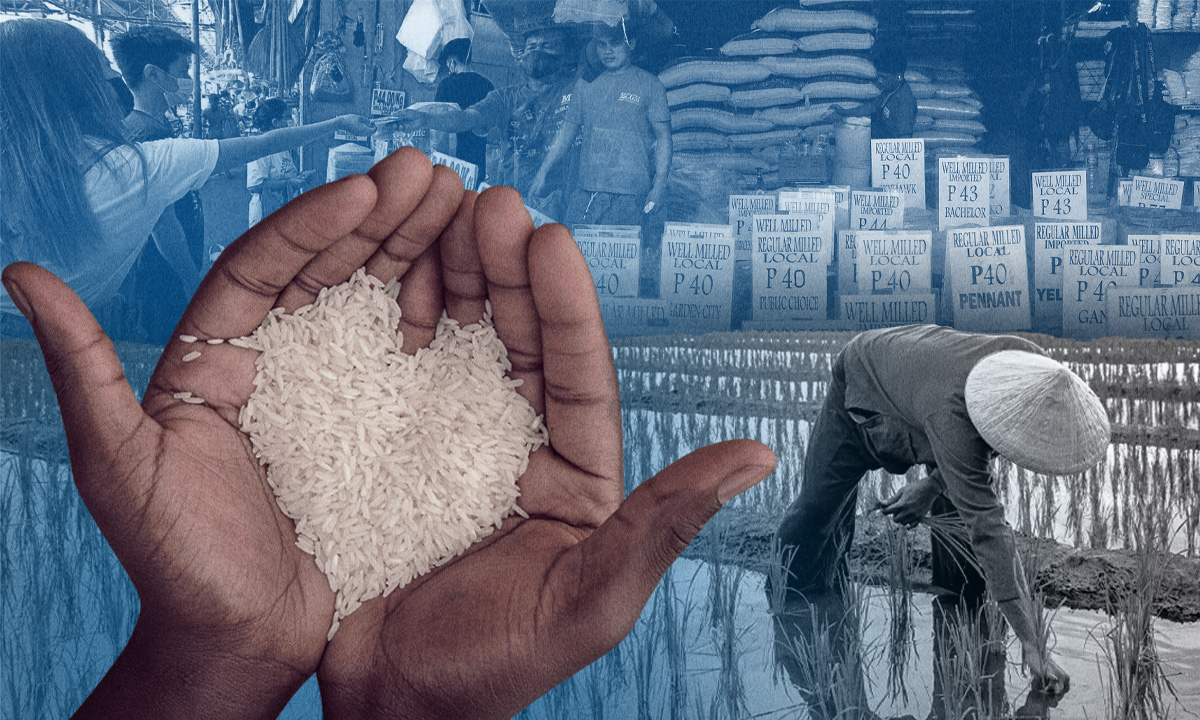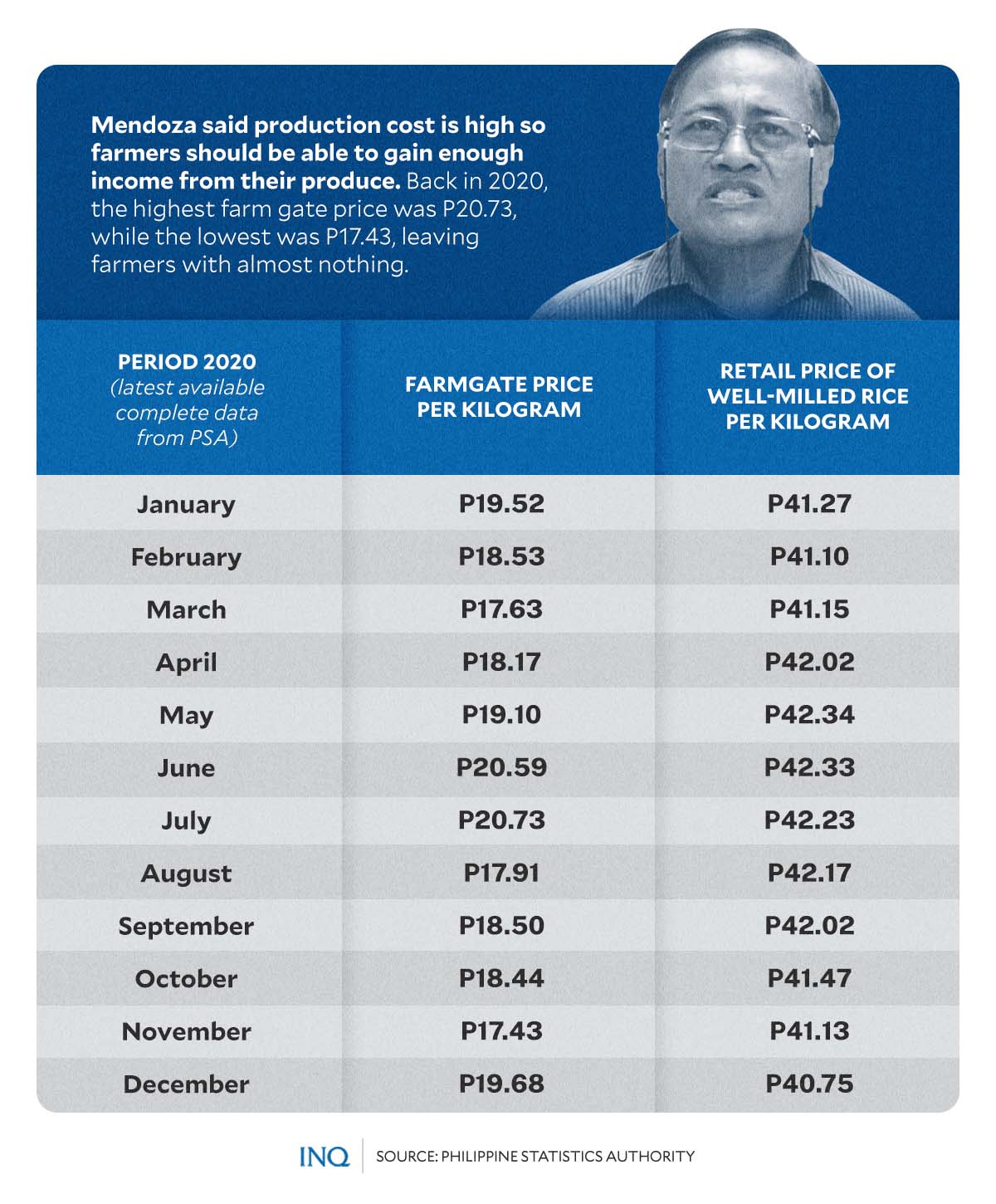In chase for elusive P20 per kilo rice, gov’t told to keep farmers’ welfare in mind
MANILA, Philippines—Bringing down the price of rice to P20 per kilo was one of the promises that made President Ferdinand Marcos Jr. win the elections, but a year later, the grain is becoming almost out of reach, especially for the poorest of the poor.
Dr. Teodoro Mendoza, a retired professor of crop science at the University of the Philippines-Los Baños, pointed to what the Asian Development Bank said in 2008, when rice was only P32.71 a kilo, that “the era of cheap food is over.”
Some 20 years ago, based on data from the Philippine Rice Research Institute, well-milled rice was only P19.98, but now, a kilo is already P40 to P52, while the price of special and premium rice is even higher at P60 and P56.
According to a report by Reuters, the retail price for the grain, either imported or locally produced, rose by 4 percent to 14 percent this month and that the steady rise triggered local rice inflation to hit 4.2 percent in July, the fastest pace since 2019.
RELATED STORY: Marcos orders DA, DTI to monitor rice prices in markets
Mendoza, however, told INQUIRER.net via FB Messenger that rice has to be sold at a higher price because the palay produced by local farmers should be bought at a price reasonable enough that they would not be left behind.
He said farm gate price for the harvest should be P25 a kilo, so that Filipinos tilling their lands would not be discouraged from producing the grain, which is a staple in the Philippines.
Too expensive?
But the P25, which Mendoza proposed, would raise the price of rice to P50, so why is a kilo of the grain now hitting as high as P60 for special local commercial rice and P65 for special imported commercial rice?
Some pointed out that this is mainly driven by lack of supply, stressing that the lean months and India’s ban on the exportation of non-basmati white rice is triggering a spike in the price of the grain, either imported or locally produced.
The Philippine Chamber of Agriculture and Food Inc. said rice from Vietnam is now P30 to P32 per kilo, higher than the previous P23 to P24. As for local rice, the Kilusang Magbubukid ng Pilipinas said there are reports that palay is being bought for P34 to P36.
Jomar Gaon, a 52-year-old farmer, told INQUIRER.net via phone call that the farm gate price for palay harvested in the last few weeks of the lean months is really high, but not as high as P34 to P36.
The group Bantay Bigas stressed that since the government relied mainly on importation without increasing the palay procurement of the National Food Authority (NFA), “everything went to private traders.”
RELATED STORY: PH may import up to 500,000 MT rice to boost inventory — DA exec Panganiban
As previously stated by Mendoza, NFA’s buying price was only P19, too low compared to private traders’ P21 to P23 a kilo. With this, the choice that local farmers took was clear, he said.
RELATED STORY: A year into Bongbong Marcos’ rule: P20/kg rice becomes a conundrum
Stabilizing costs
With local farmers set to start harvesting their crops by the end of next month or in the first weeks of October, the price of rice is expected to go down, too, but should this really be the case?
As Mendoza said, local producers still deserve to get fair and reasonable income from their yields, stressing that “a sudden drop in farm gate prices to bring down the retail prices of rice will be an injustice to them.”
Based on data from the Philippine Statistics Authority (PSA), the farm gate price for rice was P19.23 in January, P19.38 in February, P20.15 in March, P21.25 in April, P21.32 in May, and then P22.66 in June.
Mendoza said to encourage farmers to continue tilling their lands, the government should work on a better farm gate price, which is P25 a kilo, saying that with this, a farmer can earn a net of P60,000 for a harvest of five to six metric tons a hectare.
This, as he pointed out that the cost of production for the grain is getting higher, too. Local farmers, he said, should be able to have something to spend on producing palay and enough income to provide for their families’ needs.
Based on data provided by Mendoza, the cost of production for inbred varieties, like Rc222, that is planted 20 centimeters by 20 centimeters apart, is already P73,003.
Should harvests still be bought for as low as P19 by the NFA, local farmers would be left with nothing.
Inexpensive rice for the poor
As the Department of Agriculture (DA) previously pointed out, as a rule of thumb, the retail price of rice is at least double the farm gate price of palay produced by local farmers, so in this case, a P25 buying price would translate to a retail price of P50.
RELATED STORY: Rice prices expected to rise – DA
“This is well within the reach of the rich and even the middle class,” Mendoza said, stressing that “if they can spend on [prepaid or postpaid] load, they can certainly have something to spend on food, especially rice, too.”
It was previously stated by the DA that “if the farm gate price [of palay] goes up, that will translate to higher selling price [for rice],” but Mendoza said the government should also consider the well-being of local farmers.
Based on PSA data, back in 2020, the highest farm gate price was P20.73 per kilo in July, while the lowest was P17.43 in November. This translated to a retail price of P42.23 and P41.13.
Now, to make rice cheap for the poorest of the poor, Mendoza said the Rice Tarriffication Act, which was signed in 2019, should be revised to allow the NFA to increase its supply from 30 to 60, and even 90 or 100 days.
RELATED STORY: Return of NFA rice for the poor eyed, but seen as tariffication failure
But an amendment or repeal of the law, he said, should also come with an increased budget for the agency. Looking back, farmers had proposed a P50 billion budget for the NFA.
Impossible reality
Mendoza said “people are in the state of denialism,” pointing out that food, especially rice, is getting more expensive because “the cost of production is high, too, and we cannot leave farmers behind.”
RELATED STORY: Farmers missing in equation as gov’t aims for higher agri yields
He stressed that there should have been no problem with the spike in prices if wages are keeping up, especially with inflation.
As stated by the think tank Ibon Foundation, real wages and family earnings are clearly failing.
It said even in Metro Manila where the minimum wage was raised last month, the now P610 nominal wage is 47.6 percent short of the P1,164 family living wage for a family of five.
The real value of the nominal wage is only P515 as of June 2023 which is still less than its P520 value when the lockdowns started in March 2020.
“The lack of decent livelihoods and incomes is worsening poverty,” Ibon Foundation said.


